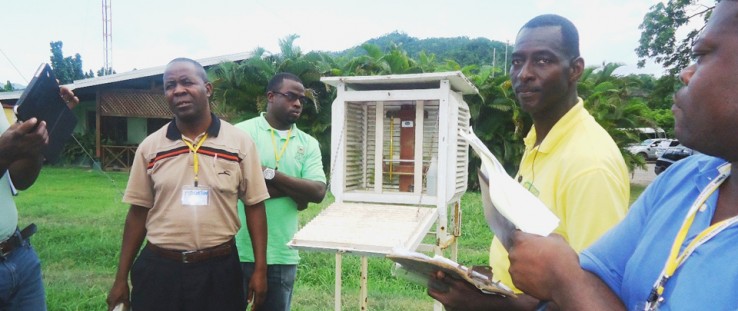 Through training provided by a USAID climate change program, agriculture extension officers learn to interpret weather readings to provide earlier and more specific local drought forecasts to farmers.
ACDI/VOCA-Jamaica
Through training provided by a USAID climate change program, agriculture extension officers learn to interpret weather readings to provide earlier and more specific local drought forecasts to farmers.
ACDI/VOCA-Jamaica
 Through training provided by a USAID climate change program, agriculture extension officers learn to interpret weather readings to provide earlier and more specific local drought forecasts to farmers.
ACDI/VOCA-Jamaica
Through training provided by a USAID climate change program, agriculture extension officers learn to interpret weather readings to provide earlier and more specific local drought forecasts to farmers.
ACDI/VOCA-Jamaica
When it comes to climate risks in the Caribbean, the bluster and rage of hurricanes and tropical storms steal the stage. These events flare up quickly, can cause enormous damage and loss of life, and dissipate within days.
Drought is different. It’s more insidious and creeping, intensifying over many months, stunting or killing crops as it develops, emptying rivers and drying out water supplies. It represents one of the most frequently occurring and persistent climate hazards faced by the Caribbean’s nearly 40 million residents.
For Jamaica, an island smaller than Connecticut, droughts can wreak havoc, especially to its many farming communities. The agriculture sector accounts for nearly 7 percent of Jamaica’s gross domestic product and employs about one-fifth of its workforce.
“Agriculture is particularly vulnerable to climate variability and drought,” says Glenroy Brown, a scientist from the Jamaican Meteorological Service. “We have many small farms that rely heavily on rainfall for their crops.”
In 2014, the country’s 3 million inhabitants faced one of the worst droughts in a decade and the fourth worst recorded since the 1970s.
“You had the situation where vegetable farmers, especially, lost entire crops, entire fields,” says Sheldon Scott, from Jamaica’s Rural Agricultural Development Authority, who works with farming communities in seven of the island’s parishes. “That caused significant loss of income and loss of investment in many of the parishes we visited.”
The normally bountiful harvests of tomatoes, melons and sweet peppers were not to be seen. The drought caused agricultural productivity to decline by 30 percent compared to 2013. This, along with bush fires sparked by the dry conditions, contributed to nearly $1 billion in losses for the country.
The impact could have been worse if not for a new seasonal drought forecasting system that Brown and his colleagues helped pioneer in Jamaica with support from USAID. The new system helps the meteorological service anticipate conditions for the coming months.
This technological innovation was the first step in building resilience. The system grew out of USAID’s support for Jamaica’s new national climate policy and recognition of how climate change might undermine the country’s long-term development goals. USAID helped the meteorological service provide information and tools to specific groups such as farmers, who are highly vulnerable to climate change but important contributors to the national economy.
“It sounds simple, but what we’re doing is essentially putting a standard three-month rainfall forecast in context with recent rainfall measurements,” says Simon Mason, a climate scientist at Columbia University’s International Research Institute for Climate and Society, who helped Brown design, build and implement the new system. “So if it has already been unusually dry and the forecast calls for below-normal rainfall, it could point to fairly serious drought.”
In little more than a year, this new drought forecast system expanded beyond Jamaica, helping inform decision-making and bolster climate resilience in 23 Caribbean countries, which may also have to make significant changes to adapt as global temperatures rise and weather patterns shift.
Success in Jamaica and Beyond
A year before the drought, back in May 2013, Brown traveled to New York to work with Mason to incorporate a new forecasting component into Jamaica’s existing drought monitoring service. Brown was joined by members of the Jamaica Rural Agricultural Development Authority and by Cédric Van Meerbeeck from the Caribbean Institute for Meteorology and Hydrology (CIMH). USAID supported the trip and the work that followed.
“It was important for us to design a system that addressed Jamaica’s needs upfront, but that would also be suitable for the rest of the region,” Mason says.
Mason had previously developed IRI’s powerful Climate Predictability Tool (CPT) software, which was already being used by forecasters in the Caribbean to produce seasonal climate forecasts.
The CPT software gave countries with small meteorological services and limited resources the capability to produce their own authoritative, up-to-date, and technically sound climate information. It also enabled them to combine global-scale forecasts with more detailed rainfall and temperature data only available at a local level.
Mason modified the software to generate drought forecasts consistent with the drought monitoring information supplied by the Jamaican Meteorological Service. He also tweaked the software to combine data on recent rainfall with rainfall predictions. This allowed the researchers to provide a forecast focused specifically on drought.
“When you do this, you get a much better indication of the prospects for drought than just having a forecast of rainfall for the next few months,” he says.
That’s because the impact of a drought is based on the duration of the rainfall, not just the amount of rainfall, says CIMH’s Adrian Trotman, who supervised Van Meerbeeck’s work on the new tool. “Just looking forward isn’t enough, not when it comes to drought, because it’s an accumulating, intensifying phenomenon.”
In November 2013, the Jamaican Meteorological Service made its first official seasonal drought forecast. While that forecast didn’t signal that a major drought was to come, it did show a high probability of below-normal rainfall for the coming three months. By February, however, the agency officially declared drought for eastern and central parishes based on what the forecast showed. In July, predictions indicated that drought conditions would persist until at least September.
The agency sent the drought forecast and other information via text messages to more than 500 farmers over the course of the drought, Brown says, and to approximately 700,000 more via bulletins disseminated by agricultural extension workers. These numbers continue to grow.
“Whenever there is an indication of some form of drought in a particular section of the island, we send out free text messages to the affected farmers warning them and advising them to take remedial action,” Brown says.
Knowing the intensity and length of a drought allows operators of both small and large farms to make important decisions, says ACDI/VOCA’s Dianne Dormer, who works on USAID’s Jamaica Rural Economy and Ecosystems Adaptation to Climate Change project. “They can make decisions on what to plant, and when. If they know a drought is coming, they may plant earlier in the growing season so that the drought doesn’t significantly impact the life cycle of the plants,” she says.
One recipient of the text service, Melonie Risden, 40, owns a 13-acre farm with her parents and nephew in Crooked River, Clarendon parish. “The information we received from the Met [meteorological] office gave us drought forecasts in terms of probabilities,” she says. “We still decided to plant because we were fortunate to have access to the river and could fill up water drums ahead of time in anticipation of the drought.”
She was able to keep much of her peas, beans and hot peppers from succumbing to the dry conditions. Her corn crop, however, was hit hard.
Risden signed up for the text service in May 2014 during an agroforestry/farmer field school run by ACDI/VOCA. “I would like to keep getting the texts because I can share them with other farmers who didn’t attend the training,” she says.
The information she received from both the field school and text messaging service definitely made a difference in her decision-making and bottom line. “Last year’s drought would have turned out worse for me without that information. Some neighboring farmers got nothing from what they planted, nothing at all,” she adds.
At the national level, the forecasts fed into decision-making at Jamaica’s agriculture and water ministries, prompting emergency water rationing across the country and water tank distribution for affected farming communities so farmers could save the crops they had already planted.
“Once a prolonged drought set in, the water minister looked at our forecast and made decisions to distribute thousands of water tanks and trucks to St. Elizabeth and other parishes hit hardest,” says Brown.
There’s little doubt that the drought forecast system led to more informed and timely decisions to avert additional damages and losses, he adds. “We were successful in part because the need for this project was identified by Jamaicans. In every step of the way, we talked to farmers and others in the agriculture sector about what kind of information would be most helpful, and how they wanted it delivered.”
Apart from successes in Jamaica, the new climate tool was positively received in other parts of the Caribbean. In May 2014, six months after the Jamaican Meteorological Service forecasted the first signs of drought, Van Meerbeeck presented the first region-wide drought outlook at the Caribbean Regional Climate Outlook Forum, which took place in Kingston. Decision-makers from 23 Caribbean countries attended.
Based on this information, planners in St. Vincent and the Grenadines and St. Lucia considered the need for water rationing and general resource management. CIMH, the Caribbean meteorological service, now issues 6- and 12-month updated drought outlooks each month.
Work also is underway to bring the innovation to Central America. Columbia University and CIMH are working with the Costa Rica-based Regional Committee for Hydraulic Resources as well as staff from Central American weather services to train forecasters on the new system.
“I think that the drought tool’s simplicity has fueled excitement to expand it to other regions and to other audiences,” says John Furlow of USAID’s Office of Global Climate Change. “Within 10 months, we went from just an idea to a tool that is serving almost 40 million people. By this summer, it will be supporting another 42 million in Central America. That is impressive, and most of the work is being done by our country partners.”
Francesco Fiondella heads communications at Columbia University’s International Research Institute for Climate and Society.









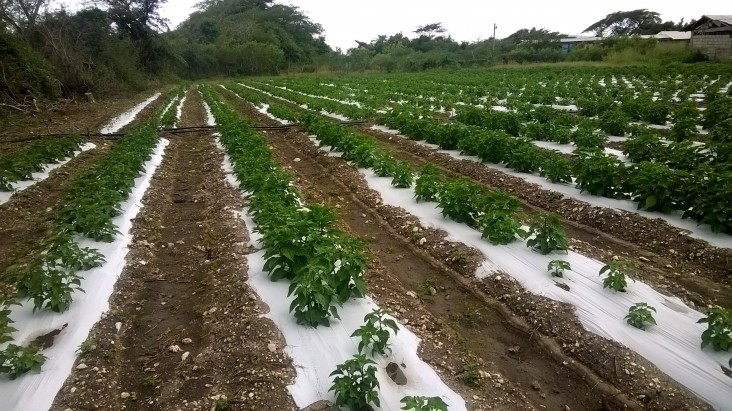
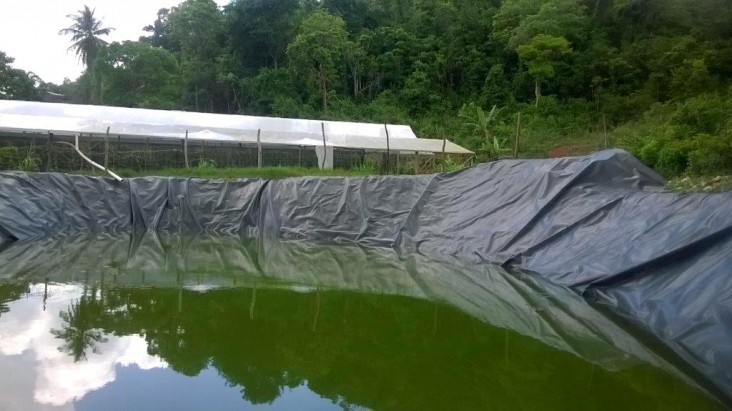
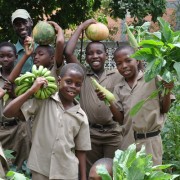
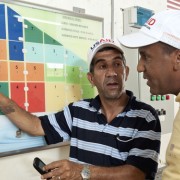

Comment
Make a general inquiry or suggest an improvement.